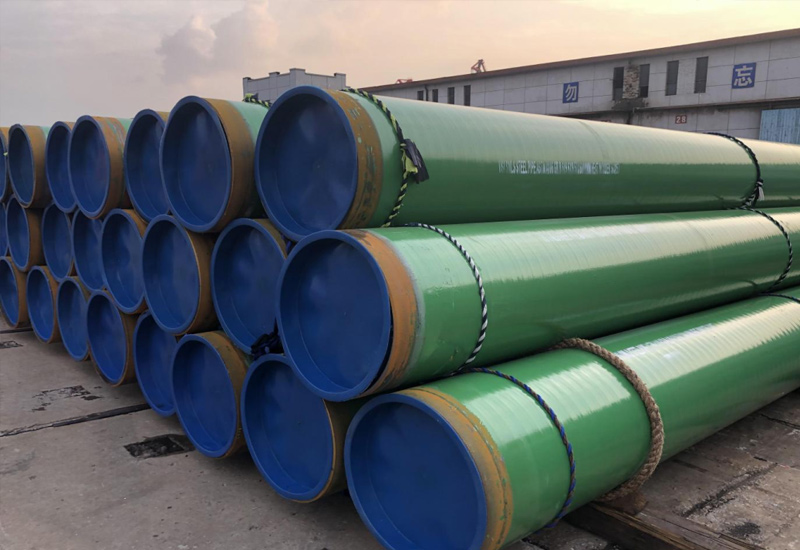HOT BLOG TAGS
EN 10255
EN 10255:2015 – Non-Alloy Steel Tubes Suitable for Welding, Threading and Other Joining Methods
1. Standard Definition and Background
EN 10255 is a European standard that has been approved by CEN. The current version of EN 10255:2015 replaces the previous editions (2004, 2007). It applies to non-alloy steel tubes for fluid purposes in general. The specification promotes consumer safety, product quality and compatibility by providing production and testing protocols suitable for manufacturers, installers, service providers, and users.
Key features:
Applies to seamless and welded tubes with tapered threads (taper 1 : 16) according to EN 10226-1.
Material name:
S195T (S = structural steel 195 = minimum yield strength in N/mm2 T = steel for tubes) PPMaterial designator: S195T (S = Baustahl, 195 = min. in MPa, T = tube application)1.0026 steel according to the EN 10020 non-alloy steel
2. Scope of Application
2.1 Primary Applications
Fluid Transport: Water, gas, steam in low-pressure systems (design pressure ≤4.0 MPa)
Structural Components: Non-load-bearing elements (e.g., building supports, machinery frames)
Connection Compatibility: Designed for welding, threading, and socket joints
2.2 Service Limitations
Temperature Range: -30°C to 120°C (conventional media); higher temperatures require additional assessment
Environmental Conditions: Suitable for neutral soils (pH 4-10); corrosive environments mandate zinc coating or epoxy protection (EN 10240)
3. Dimensions and Tolerances
3.1 Size Ranges
| Parameter | Range | Series |
| Outside Diameter | 10.2 mm – 165.1 mm | Medium Series |
| (Thread Size) | (1/8″ to 6″) | Heavy Series |
| Wall Thickness | Defined by agreement | Three specified types |
3.2 Key Tolerances
Table: Geometric Tolerances (EN 10255:2015)
| Parameter | Permissible Deviation | Test Standard |
| Outside Diameter | ±0.75% OD (DN < 508 mm) | EN 10233 (flattening) |
| Wall Thickness | ±12.5% t (Light) / ±10% t (Heavy) | Ultrasonic/Eddy Current |
| Pipe End Ovality | ≤1% OD (within 100 mm of end) | Caliper measurement |
| Straightness | ≤0.2% of tube length | Straightedge method |
Note: Tube ends require 100-150 mm uncoated zone for welding (bevel angle ≤30°).
4. Material and Performance Requirements
4.1 Chemical Composition
*S195T Non-Alloy Steel Limits (wt%)*:
Carbon (C) ≤ 0.24%
Sulfur (S) ≤ 0.035%
Phosphorus (P) ≤ 0.035%
Manganese (Mn) ≤ 1.40%
4.2 Mechanical Properties
Table: Mechanical Requirements for S195T
| Property | Requirement | Test Standard |
| Yield Strength (ReL) | ≥195 MPa | EN 10002-1 |
| Tensile Strength (Rm) | 330–500 MPa | |
| Elongation (A) | ≥25% (5.65√S₀ gauge) | |
| Yield-to-Tensile Ratio | ≤0.93 |
5. Manufacturing and Testing Requirements
5.1 Mandatory Tests
Pressure Test:
Hydrostatic/pneumatic at ≥1.5× working pressure (duration ≥5 s)
Alternative: Electromagnetic testing (EN 10246-1) for DN<600 mm tubes
Mechanical Tests:
Tensile and flattening tests (2 samples per ≤100-tube batch per EN 10233)
5.2 Non-Destructive Examination (NDE)
Weld Inspection: 100% UT or RT for welded tubes (RT acceptance: EN ISO 11666 Level II)
Surface Defects: Repair/cut out if depth >12.5% wall thickness
6. Certification and Compliance
6.1 CE/UKCA Certification
Module 3: Notified Body (e.g., NB 1020) audits + sample testing (5-year validity)
Module 4: Manufacturer self-verification + Declaration of Performance (DoP) + FPC system
6.2 Key Certification Items
Reaction to fire performance
Dimensional tolerance verification
Hazardous substance testing (RoHS compliance)
7. Technical Evolution and Industry Impact
7.1 Routine Maintenance (2015)
Further compatible with other joining processes (push-fit etc.)
Explicit hazardous substance limits (Pb, Cd, Hg, Cr+6, PBB, PBDE)
Closer foreign equivalent would be S195T and also look for Gr B with CHEMICALS 9370 0.10/0.20 S195T 390102045 S195T 8159 (TS-14) 0.02/0.22 A 34020 12 0.025 0.015 22 C–C 410 QVERIFY Read it and weep.
7.2 Engineering Value
4、Economicaly cut:Reducing the cost of material by 30% by optimized the series of Medium/ Heavy.
1>Safety Ensured: Yield-to-tensile ratio cap (<=0.93) makes sure no failure occurs below the yield strength.
8. Conclusion and Technical Trends
EN 10255 establishes the benchmark for European low-pressure fluid conveyance systems through:
Precise dimensional control
Non-alloy steel performance grading
Connection versatility
Future Focus:
Sustainable low-carbon steel variants (e.g., S195T-L)
Automated UT inspection (EN ISO 10893-11)
Implementation Guidance:
Gas pipelines: Prefer Heavy series + zinc coating (EN 10240)
EU exports: Specify CE certification module (3 or 4) in contracts
Related Products
Share:
HOT TAGS
latest posts
- Steel Density Analysis: Core Differences between Mild and Medium Carbon Steels and Industrial Applications
- Carbon Steel Floating Pipeline Systems: Innovative Applications of LSAW/SSAW Steel Pipes in Marine Engineering
- LSAW Steel Pipe: UOE vs JCOE Process | Allland steel pipe
- Onshore Pipeline: A Complete Selection Guide
- 3PE Pipe Coatings: A Guide to Protection, Standards&Applications










